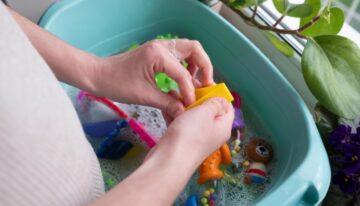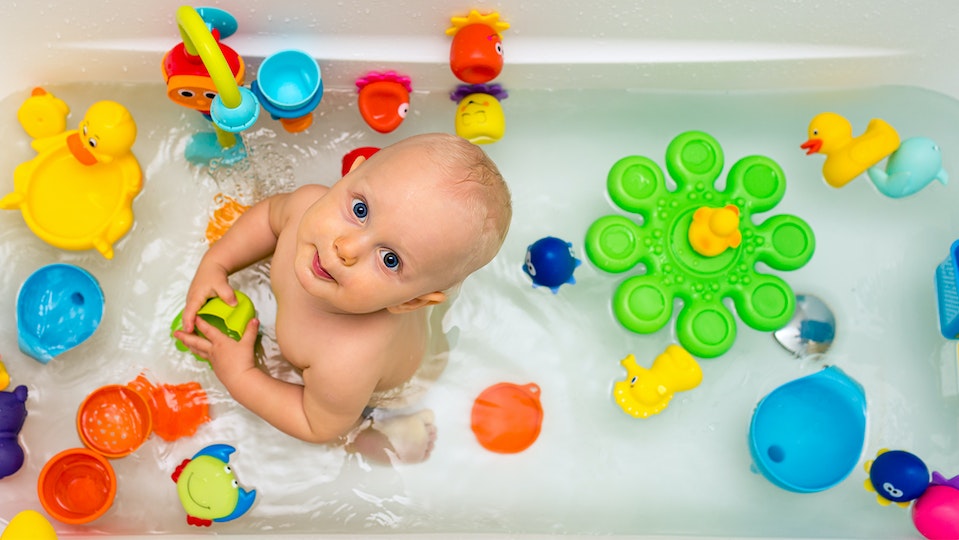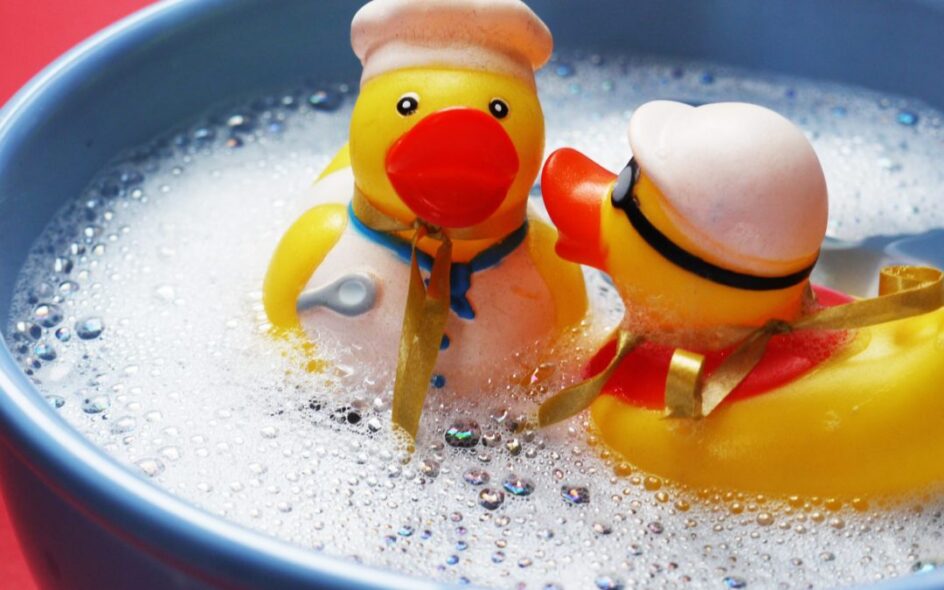
Bath toys, like shower walls, are susceptible to mold formation. They also come into touch with microorganisms floating in the bathwater, which might cause diseases in your children. Follow these cleaning recommendations to keep bath toys clean and mold-free.
Squeeze as much water out of the Baby toys as possible after each wash. Place them at the tub’s edge or where they can dry rapidly. After bathing, turn on the bathroom exhaust fan for 15 to 20 minutes to draw humidity out of the room and help the toys dry even faster.
Mold thrives in the most obvious places: bath toys. Shooting water from small holes in rubber toys is enjoyable, but moisture gets trapped inside, and mold grows. This implies that mould spores will enter the water the next time you use this toy in the bath. If this prospect disgusts you, use a dab of hot glue to patch the holes in bath toys.
How to Clean Bath Toys with Vinegar
You may believe your children’s bath toys are sufficiently cleaned by the soap in the tub, but you should remove all toys from the bathing area and thoroughly clean them once a week.
Vinegar is a natural cleaning agent that dissolves soap scum and removes stains, making it ideal for cleaning bath toys. Fill a bucket halfway with vinegar and halfway with warm water (and a few drops of tea tree oil or lemon oil, if you desire). Soak the bath toys for one hour in warm water. Then, rinse each toy under running water and air dry.
How to Sterilize Bath Toys with Heat
Bath toys are sterilized when heated to a high temperature, killing bacteria that might cause illness. The simplest method to accomplish this at home is to put the toys through the dishwasher. Place them on the top shelf, away from the intense heat, to prevent damage. Smaller toys can be loaded into the dishwasher in a mesh lingerie bag if you’re worried about them falling out. Run a cycle with only the toys inside the dishwasher using regular detergent.
The sink may sterilize bath toys if you don’t have a dishwasher. Dish soap and some of the hottest water you can muster should be added to a basin. The toys should be submerged and left to soak for a while. After that, scrub them off with a sponge or towel. Wearing rubber gloves will help to shield your hands from the heat. Toys should be rinsed with soap before letting them air dry.
How to Sanitize Bath Toys with Bleach
Consider using bleach for a more thorough cleaning. The key is to choose a powerful solution to destroy germs and viruses but gentle enough to guarantee that no harmful bleach residue remains on bath toys that your youngster is sure to gnaw on.
We advise using 1 tablespoon of bleach per gallon of water to get the ideal balance. Put the bath toys in a bucket with this mixture in it. Give them about ten minutes to soak. After that, properly clean the toys with tap water and let them air dry.
Run through the dishwasher.
If your day is as busy as it gets, you might seek a speedier, more straightforward fix to this bath toy mess. If so, all you need to do is place your child’s bath toys on the top rack of the dishwasher and run the hot cycle. Voilà, tidy toys! Before employing this technique, we advise you to read the manufacturer’s instructions because certain bath toys won’t fit in the dishwasher.
Boil in hot water.
Simply boiling the bath toys in a big pot of water is another way to get rid of mold on bath toys. Both toys are made of hard plastic, and foam letters and numbers can be used for this. Just bring the water to a boil, then add the toys using a pair of kitchen tongs. After a brief soak in hot water, carefully remove the toys and set them on a towel to dry entirely. If you’re unsure how to clean bath toys indoors, use this approach.


















